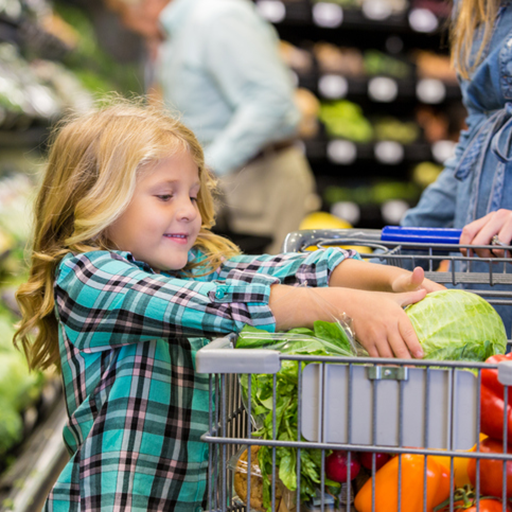Basic Cooking Techniques
If you are patient or a parent of an SCD child and are new to cooking or have not had much experience in the kitchen, you may be feeling completely overwhelmed. Suddenly you're faced with spending a lot more time planning meals, shopping, and cooking. You may also see a number of terms in the recipe section of this book and not be quite sure what they mean.
Luckily, help is at hand—hundreds of great resources on every aspect of cooking, thousands of different cookbooks and millions of recipes exist on the Internet and at booksellers. Thanks to a burgeoning American interest in food and cooking, an entire world of cuisines is now available at our fingertips—as are many diverse ingredients that were relatively unknown or hard to find even just a decade ago. Check out our section on Cooking Resources for some of the most popular and reputable sources.
To get you started, here is a rundown of basic cooking techniques:
Boiling
While you can certainly cook many foods (vegetables and even meats) by boiling them, it’s not the method of choice if you want the most flavor and nutrition from your food. These days, good cooks use boiling water, often salted, to cook vegetables very quickly—actually called blanching—with the goal of removing them from the water before they become waterlogged and overdone. Once blanched, your crisp-tender, brightly colored vegetables can be eaten right away, tossed into a sauté pan with a bit of oil to brown them up, or chilled for later use.
Steaming
A good, wide steamer pot or bamboo basket will soon become your best kitchen friend because steaming is a fantastic way to cook and eat vegetables. Steam is hotter than boiling water, so veggies cook quickly—and they also cook evenly at the same time. Your vegetables come out of the pot perfectly prepared, giving you control over how to season or use them after that.
Steaming may also be used for fish: throw some aromatics (onion, garlic, ginger, whole spices) into the water, steam a fish fillet or some prawns—there’s almost no way to overcook steamed fish—and drizzle with lemon butter for a wonderful entrée.
Stir-frying
When we think of stir-frying, usually the first thing that comes to mind is a wok, that very wide, shallow metal pan that originated in China. It’s great if you have a wok for stir-frying, but a large sauté pan (12 inches is a common size) is a reasonable substitute. The technique of stir-frying is simply one of adding ingredients to the hot pan (usually starting with some oil or liquid), putting in the ones that take the longest to cook and ending with the quickest-cooking ingredients, tossing or stirring everything as it cooks. Often you’ll add some final seasonings or sauce to finish.
It’s important with stir-frying to know how long various ingredients take to cook and to be able to wield a knife well enough to cut even-size pieces. Because stir-frying cooks food so quickly, it is also important to have all of your ingredients already cut up and ready to go before you start heating the pan. Having said that, it seems like almost anything that comes from a stir-fry recipe tastes delicious . . .
Sautéing
Sautéing is, in a way, the French version of stir-frying. A small amount of oil is put into a wide skillet or sauté pan and set over medium to medium-high heat. The foods—meats, fish, poultry, or vegetables—cook fairly quickly as they are tossed (probably not with the vigor of stir-frying in a wok) over the direct heat. Often sautéing produces food that is slightly browned or caramelized, giving extra flavor and dimension to just about anything!
Stewing
Almost all of us know firsthand what a stew is: a combination of meat, vegetables, and seasonings in a sauce or broth that is eaten as a hearty, stand-alone dish. The key to successful stewing is to choose the right cuts of meat, cover the solid ingredients with a generous amount of liquid, and cook them very slowly for several hours. Flavor combinations are almost endless; think of a Moroccan tagine, an Irish lamb stew, American-style beef stew, French coq-au-vin, and so on. Many of these basic formulas can be adapted to fit the SCD plan. Last, don’t forget to use a crockpot for your stew making—there’s a lot to be said for combining all your ingredients and walking away!
Braising
Braising is closely related to stewing. Generally, the cuts of meat used are the same (the cheaper, tougher, more flavorsome ones)—but braising definitely means using less liquid, keeping the pot covered, and again, cooking at a very low temperature until the luscious meat starts to fall apart. Your mom’s pot roast comes under this category, as does pulled pork for barbecue. Don’t be tempted, if your recipe calls for browning the meat before assembling the braise (or stew), to skip this step! You’ll get tons of dark, caramelly flavor notes in the process.
Frying (also deep-frying)
Think of fried chicken cooking happily in a cast-iron pan on the stove, and you’ll recognize the technique called pan-frying. It differs from sautéing in that more fat is used, often to effectively surround a bumpy, SCD breaded piece of something tasty.
Deep-frying, of course, implies submerging the food completely in oil. And while most of us don’t deep-fry food too often at home, it’s a very doable process. You’ll have the most success by dedicating a medium pot to deep-frying (since the oil can coat the inside of the pot and make it rather sticky) and by investing in a thermometer that attaches to the side of that pot. Temperature is critical for making deep-fried foods that cook evenly and don’t retain a ton of extra oil.
Roasting
If you’re not already eating oven-roasted vegetables on a regular basis, you’re going to love starting! Simply cut one or more types of vegetables into even-sized pieces, then toss them in a bowl with flavorful olive oil and a sprinkle of salt and pepper. Spread them out on a cookie sheet and bake them at a pretty high temperature—385°F to 425°F is about right—until they are caramel-brown and slightly crisped. Your kids will love the way this method adds sweetness to the flavor of their favorite vegetables.
Oven-roasting is also an excellent method for cooking meat and poultry. Think of that whole, golden-brown, herb-roasted chicken; or of a garlicky roasted rack of lamb or pork; or a beef standing rib roast. Find a respected cookbook that helps you choose the proper cut of meat for this (and all) methods.
Baking
Baking can refer to the way we cook many savory foods (anything from a single squash to a casserole); it implies cooking food, usually uncovered, with dry heat.
Then there’s the kind of baking that we all tend to love: the kind that produces bread, pastries, cookies, and so on. Being on the SCD doesn’t mean you have to give up these things completely, but it does mean that you’ll be learning a new way to produce baked goods. You’ll be using different types of flour (almond instead of wheat, for instance), and natural sweeteners that are not so intensely sweet, but are much more healthful. Take baking step by step, using trusted sources for your recipes and ideas.
Microwaving
Microwaving can be a big timesaver for busy families; besides reheating and defrosting, it can also be used to precook certain ingredients that are destined for the recipe you’re making for dinner. Of course, microwaves have their drawbacks: they don’t always cook or reheat things evenly, and they can toughen or overcook meat and certain other foods. You can best decide which tasks they’re most suitable for, depending on your style of cooking.
Freezing
Freezing can be a godsend for busy SCD families, enabling them to prepare different ingredients, sauces, condiments, side dishes, and entire meals when they have more time for cooking. Then it’s easy to just pull out items for lunch or dinner, thaw, heat, and eat. Single-serving portions are especially handy for quick meals. Freezing is also a great way to stock up on meat and produce when they are in season and at their most economical. Be aware that not all foods keep equally long, so be sure to write the date on all of your items. Also, food must be properly packaged to avoid ice crystals and thus freezer burn, which changes texture and hastens deterioration. See the Resources section in this book for freezing guidelines.




